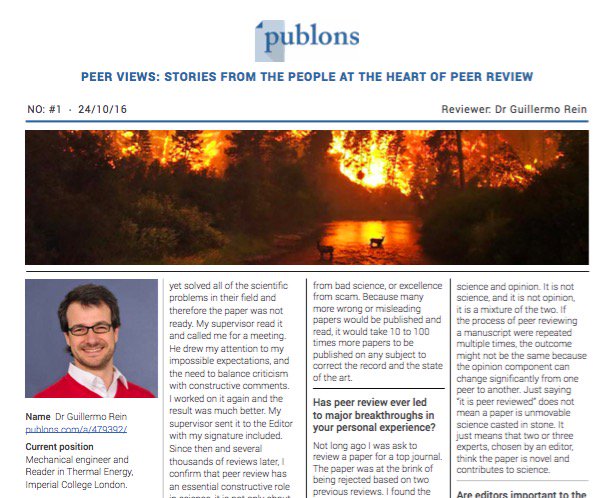International Association of Wildland Fire (IAWF).
by Dr Guillermo Rein, Imperial College London.

 |
|
Guillermo (left) receives the award from Dr Tom Zimmerman, the President of the International Association of Wildland Fire (IAWF). |
I am honoured for receiving the Early Career Award and I am thankful to the Board of Directors and the IAWF for having chosen me. I also would like to thank my students, collaborators, sponsors and my family; if I did something of merit, it was because of their abundant support all the way.
Our mission, the mission of all of us attending the conference, is dual. First to understand fire, and then apply this knowledge to protect the habitants of Earth; namely humans, and Nature itself.
You see. I am an engineer, and my other affiliation is with fire safety in buildings where all fires are unwanted. It is easier: all fire is evil; it must be suppressed and not be given any change to come back to the building.
But fire in the forest can be a force for the good and only becomes evil when unbalance. Indeed, wildfires are important elements of Nature. Not only fire contributes since millions of years ago in shaping most ecosystems on Earth, but fire plays essential roles supporting life through the regulation of atmospheric oxygen, the carbon cycle, and the climate.
This obligatory balance between excess and absence must be attained through the management of fire, and makes the wildfire problem more complex, more important and more fascinating to solve.
Fire science requires more decades of fruitful work and international collaborations to mature and establish a complete understanding of the phenomena and its management. And I am delighted to see the IAWF is at the fore front of these efforts at an international scale, and has become the home where practitioners and researchers come together to talk and share.
I would like to finish with the old Finnish saying:





















